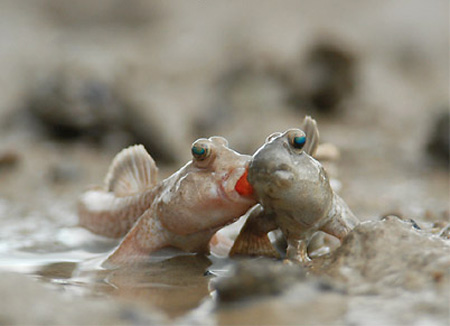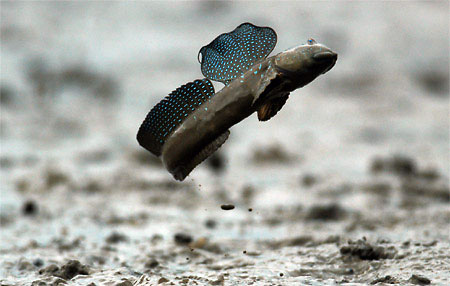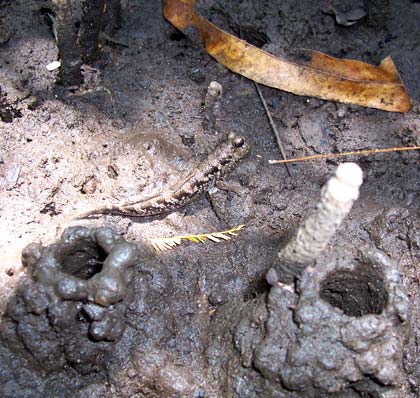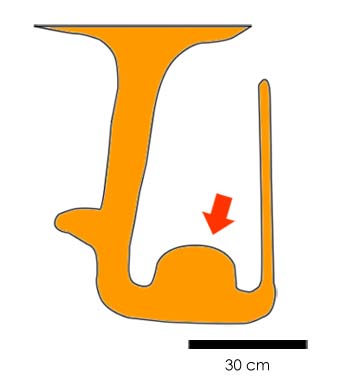|
Courtship behaviour has been described for a very limited number of species: Periophthalmus sobrinus= P. argentilineatus or P. kalolo (Brillet, 1970; 1976; 1980b; 1984a); P. chrysospilos (Macnae, 1968; Polunin, 1972); Scartelaos histophorus (Milward, 1974); and Boleophthalmus dussumieri (Clayton & Vaughan, 1988).
Several elements of the behavioural sequence closely resemble elements of aggressive or agonistic behaviours (Brillet, 1980b).
In all observed species though, this sequence presents some peculiar traits.
At first the male digs a burrow
within a territory which is actively defended from conspecific males and other intruders (crabs, other mudskippers, etc.). The egg chamber, dug in a horizontal branch of the burrow,
is characterised by a smooth and vaulted ceiling: it is here that an air phase is maintained.
The male then tries to attract any females that cross its territory by means of various displays. To do so, it exhibits
specific and intense coloration of its body and fins (dorsal fins and in some cases also the caudal fin), typical
body postures (e.g. dorsal arching and dorsal fin erection), and energetic movements (e.g. vertical jumps and body undulations: see also Vision & Mechanoreception).
A scarcely ritualised phase ensues (though the sequence can still be interrupted), during which the female follows
the male towards the entrance of the burrow (promenade nuptiale: Brillet, 1984a).
Finally the partners enter the burrow,
where eggs are laid and fertilised.
In a study made during the reproductive season of P. sobrinus (= P. argentilineatus or P. kalolo) Brillet (1976) found burrows containing laid eggs only ever had males
present; whereas burrows that held no eggs were host to (in order of decreasing
frequency) males, females, and finally couples (Brillet, 1976). In Scartelaos histophorus a pair is guarding the territory and cohabits in their burrow (Townsend & Tibbetts, 2005).
Probably in the majority of oxudercine species (as in the majority of gobies:
Miller, 1984, 1986), it is the male that guards the eggs, the cohabitation period of partners being relatively short.
|

Periophthalmus modestus (Ariake Sound, Southern Japan, 2003).
A male (left) is courting a female (right); note the pale nuptial coloration of the male, which strikingly contrasts against the dark colour of the mudflat. Photo: © BlueNativeFactory (2006), with permission

Boleophthalmus pectinirostris (Ariake Sound, Southern Japan, 2003).
A male is leaping on the mudflat with spread and brightly coloured fins to attract females. Photo: © BlueNativeFactory (2006), with permission
|






